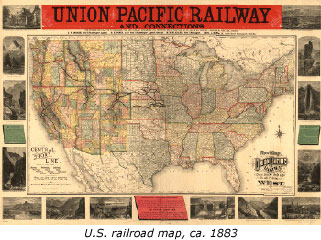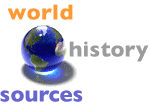|
|
|
Obviously not all details about a place or topic can be shown on a single map. The mapmaker selects which details to include, and which to omit. When you look at a map it is important to think about what is on the map and why, and what is not on the map, and why not.
Sometimes it’s impossible to know what is not on a map and what features the mapmaker has consciously privileged. But in general, the degree and nature of map-selectivity is dictated by several factors, including:
- the limits of drafting, scale, and size of the finished map: On an 8”x11” piece of paper, you could draw an extraordinarily detailed map of your bedroom, including the exact placement of doors, windows, and posters on the wall; drawing a map of Canada on the same size of paper, however, you could only show the major cities and geographic divisions and not much else.
- the “politics of importance” and the contours of curiosity: For every feature included on a map, dozens are left off. For every map that is made, dozens are not. What individual mapmakers and societies find “interesting,” “important,” and worthy of study changes over time—and is influenced by myriad factors, including fashion, politics, social and economic currents. Few mapmakers today would bother making maps of whaling stations in the South Pacific (commercial whaling is currently practiced by only a few
 nations, and the use of whaling stations has all but ended). But in the mid-1800s, maps of whaling stations were highly prized commercial commodities and were produced at a frenzied pace. In the 1890s it was easy to find atlases and maps in the United States of wines, railroads, and voting patterns, but not a single map on the status of women. nations, and the use of whaling stations has all but ended). But in the mid-1800s, maps of whaling stations were highly prized commercial commodities and were produced at a frenzied pace. In the 1890s it was easy to find atlases and maps in the United States of wines, railroads, and voting patterns, but not a single map on the status of women.
- the purpose of the map and the audience served: A military map designed to guide an armed attack on a city will show quite different detail than a map designed to showcase the recreational parks and gardens of that same city. A map reflects not only what is “there,” but what the user needs to see—or what the mapmaker thinks the user wants to see. Sometimes purpose-driven design leads to outright fraud or fanciful embellishments on maps as mapmakers try to anticipate what users most want to believe is there. Sometimes this leads to deceit. For example, in the 1950s in the name of national security, Soviet mapmakers always left several large (strategically-important) cities off their maps and American maps always left off several large military facilities and testing ranges. As map readers, we hope or assume that outright fraud, deceit, or manipulation is at the extreme end of the purpose-driven design spectrum, but all maps are influenced by “purpose” and “audience.” A critical reader of historical maps needs to explore beyond the map itself in order to interpret the map.
 
|







